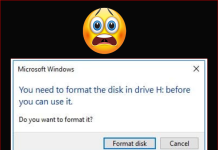Are you a blogger looking to improve your search engine optimization (SEO) and increase your website’s visibility? Look no further! In this guide, we will explain the importance of SEO-friendly meta tags and provide you with a step-by-step tutorial on how to add them to your Blogger website. By the end of this article, you’ll have all the knowledge you need to optimize your blog posts and improve your search engine rankings.
Why Meta Tags Are Important for SEO
Meta tags are snippets of text that provide a description of your blog post’s content. While they are not visible on the front end of your blog, they play a crucial role in helping search engines understand what your blog post is about. Here are some reasons why meta tags are important for SEO:
Improved Search Engine Visibility: Meta tags help search engines identify and categorize your blog content, making it easier for them to display your site in search results.
Better Ranking: Search engines like Google use meta tags to determine the relevance and quality of your content. By optimizing your meta tags, you increase your chances of ranking higher in search results.
Enhanced Social Media Sharing: Meta tags also provide information about your blog post when shared on social media platforms. They help in displaying a preview image, title, and description, making your content more appealing to users.
Now that you understand the importance of meta tags for SEO, let’s dive into the step-by-step process of adding SEO-friendly meta tags to your Blogger website.

Step 1: Adding HTML Code to Your Blogger Template
To add SEO-friendly meta tags to your Blogger website, you need to modify your template’s HTML code. Follow these steps:
Log in to your Blogger account and go to your blog’s dashboard.
Navigate to the “Theme” section and click on “Edit HTML.”
Look for the <head> tag in the HTML code. It usually appears near the beginning of the code.
Just below the <head> tag, paste the following HTML code:
Click here to download the code
What are some other SEO strategies I can use to improve my Blogger website?
improving your Blogger website’s SEO, are we? Well, you’ve come to the right place! Let’s dive into some other strategies you can employ to give your website a boost in the rankings.
Optimize your blog post titles: Craft catchy and keyword-rich titles for your blog posts. This will not only grab the attention of readers but also help search engines understand what your content is about.
Focus on keyword research: Conduct thorough keyword research to identify the terms and phrases your target audience is searching for. Use these keywords strategically throughout your blog posts to increase your visibility in search results.
Create high-quality content: Content is king, my friend. Make sure your blog posts are well-written, informative, and engaging. Aim to provide value to your readers and answer their questions. This will not only keep them coming back for more but also attract organic traffic from search engines.
Use internal linking: Linking to other relevant posts within your blog can improve the overall user experience and help search engines discover and index your content more effectively. Be sure to use anchor text that includes relevant keywords.
Optimize your images: Images are a great way to enhance your blog posts, but don’t forget to optimize them for SEO. Use descriptive file names and alt tags that include relevant keywords to help search engines understand the content of your images.
Improve your website’s loading speed: Slow-loading websites can be a major turn-off for both users and search engines. Optimize your website’s loading speed by compressing images, minifying CSS and JavaScript files, and investing in a reliable hosting provider.
Encourage social sharing: Social signals can indirectly impact your website’s SEO. Make it easy for your readers to share your content on social media platforms by including social sharing buttons on your blog posts. This can help increase the visibility and reach of your content.
Build backlinks: Backlinks are still an important factor in SEO. Seek opportunities to earn high-quality backlinks from reputable websites in your niche. This can be done through guest blogging, influencer collaborations, or creating share-worthy content that naturally attracts links.
Optimize your meta tags: Don’t forget to optimize your meta tags, including the meta title and meta description. These are the snippets that appear in search engine results, so make sure they are compelling, concise, and include your target keywords.
Monitor and analyze your performance: Keep a close eye on your website’s performance using tools like Google Analytics. Monitor your traffic, user behavior, and keyword rankings to identify areas for improvement and adjust your SEO strategy accordingly.
What are some effective ways to encourage social sharing of my blog posts?
the power of social sharing! It’s a wonderful way to increase the visibility and reach of your blog posts. Let me share some effective ways to encourage social sharing and get your content out there:
Add social sharing buttons: Make it super easy for your readers to share your blog posts by including social sharing buttons. These buttons allow users to quickly share your content on popular social media platforms such as Facebook, Twitter, LinkedIn, Pinterest, and more. Place them prominently on your blog posts, preferably at the beginning or end, to catch your readers’ attention.
Craft share-worthy content: The first step to encouraging social sharing is to create valuable, informative, and engaging content that people would want to share. Write blog posts that provide practical tips, solve problems, evoke emotions, or offer unique insights. The more remarkable your content is, the more likely it is to be shared.
Use visuals to your advantage: Humans are visual creatures, and incorporating eye-catching visuals into your blog posts can significantly increase their shareability. Include relevant and high-quality images, infographics, or videos that complement your content and encourage readers to share them on platforms like Instagram, Pinterest, or YouTube.
Write compelling headlines: Your blog post headlines should be attention-grabbing and pique readers’ curiosity. A well-crafted headline can entice people to click and share your content. Use power words, numbers, and emotional triggers to make your headlines irresistible.
Include “Click to Tweet” quotes: Sprinkle some shareable quotes or snippets throughout your blog posts and make them easily shareable with the “Click to Tweet” feature. This allows readers to click on the quote and share it directly to their Twitter feed, giving your content more exposure.
Engage with your audience: Building a strong relationship with your audience is key to encouraging social sharing. Respond to comments on your blog posts, engage with your readers on social media, and encourage them to share their thoughts and opinions. By fostering a sense of community, you’ll create loyal followers who are more likely to share your content.
Collaborate with influencers: Partnering with influencers in your niche can give your blog posts a significant boost in social sharing. Reach out to influencers who align with your content and ask if they would be interested in sharing your blog posts with their audience. This can expose your content to a wider network of followers and increase its chances of being shared.
Run social media contests or giveaways: Everyone loves freebies! Organize contests or giveaways on social media platforms and make sharing your blog posts a requirement to enter. This not only encourages social sharing but also helps increase your brand awareness and engagement.
Share your own content on social media: Don’t be shy about sharing your own content on your social media channels. Be consistent in promoting your blog posts, and don’t forget to include a call-to-action asking your followers to share if they find the content valuable.
Analyze and optimize: Keep an eye on your social sharing metrics using tools like Google Analytics or social media analytics. Monitor which blog posts are being shared the most and identify patterns or trends. This will help you understand what type of content resonates with your audience and allow you to optimize future blog posts for better social sharing.
Remember, building a strong online presence takes time and effort. Be patient, keep creating valuable content, and actively engage with your audience. Soon enough, your blog posts will be shared far and wide!










